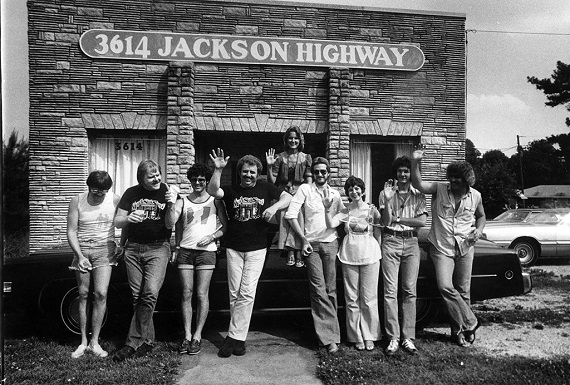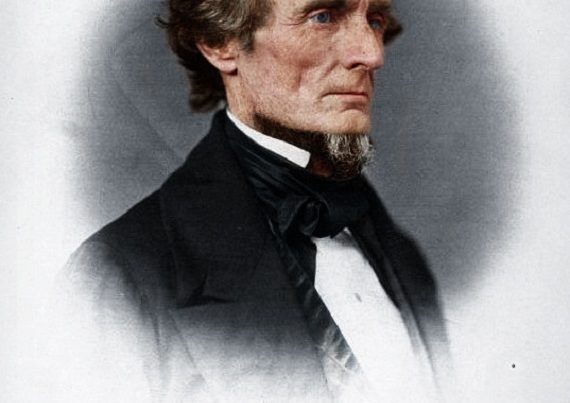Have you ever wondered about that cryptic third verse of “Sweet Home Alabama?”
The music industry of Muscle Shoals, Alabama is almost a perfect encapsulation of the Southern experience – Yankees can’t figure out where it came from, and Southerners know exactly where it came from.
Of course, “Muscle Shoals” refers to the entire quad-city area of northwest Alabama along the Tennessee River, including Muscle Shoals, Florence, Sheffield, and Tuscumbia. In the 1960’s, the soul sounds of Motown in Detroit were sweeping through the American pop music charts as an answer to the chart dominance of The Beatles and the rest of The British Invasion. Motown was represented as the authentic sound of American soul music. The only problem is that it wasn’t.
The recording studios in Memphis, Tennessee and Florence, Alabama were busy producing some seriously competitive soul music, and it sounded a LOT more authentic than what was coming out of Detroit. Booker T. & the MG’s out of Memphis were providing backup to the spine-tingling vocals of Sam & Dave, and Otis Redding, and a separate group of musicians called The FAME Group in Florence were kicking butt behind Percy Sledge and Wilson Pickett .
In 1967, New York record executive Jerry Wexler brought newly-signed Aretha Franklin to FAME Studios in Florence to start recording some authentic soul music with some authentic soul musicians. Aretha was wary of the fake-sounding soul coming out of Detroit, and she specifically wanted to do some authentic work with the same guys who were kicking butt with Wilson Pickett. When she walked into that Alabama recording studio in 1967 and saw a bunch of white guys plugged in and ready to play, she nearly quit.
She wanted authentic soul music. Jerry Wexler calmly explained to her that this was it. This WAS authentic. No matter what color these guys happened to have for their skin, they were the same guys who grew up in rural Alabama listening to soul and gospel, and they were the same guys who gave Percy Sledge and Wilson Pickett such a stirring soul sound. She briefly flirted with the notion of going to Memphis, instead, but Wexler advised her that the situation there was exactly the same. It appeared that the so-called authentic soul music coming out of Tennessee and Alabama was a product of bi-racial cooperation. It’s one of those things Southerners have always accepted, but Yankees can’t seem to get their heads around.
Aretha would not be the last singer to come to Alabama and marvel at how good these white guys were at playing authentic soul. But why shouldn’t they be good at it? It was music they’d known and played their whole lives. Instead of being “white guys,” they were just musicians. Many, many soul artists were suddenly begging their producers to send them to Alabama so they could work with The FAME Group and record some authentic soul.
Eventually, an unfortunate dispute between Wexler and FAME Studios founder Rick Hall caused Wexler to steal The FAME Group away from him and open up a rival studio across the river in Sheffield at 3614 Jackson Highway called Muscle Shoals Sound Studios. From there, Wexler branched out into other genres, and all different kinds of rock artists were begging to come to Alabama and capture that biting soul sound, too.
The original group that Rick Hall assembled at FAME consisted of Jimmy Johnson on guitar, Spooner Oldham on keyboard, Junior Lowe on bass, and Roger Hawkins on drums. Barry Beckett eventually replaced Spooner on keyboard, and David Hood replaced Junior on bass, and that was the nucleus of musicians who moved to Muscle Shoals Sound. Other house musicians came and went as they added their unique contributions to the sounds of The Swampers, including an up-and-coming slide guitarist named Duane Allman. The list of hit songs recorded by major artists in Muscle Shoals at that time is ridiculous, including Percy Sledge, Wilson Pickett, Aretha Franklin, James & Bobby Purify, Otis Redding, Lou Rawls, Joe Tex, The Staple Singers, Joe Cocker & Leon Russell, Jimmy Cliff (the first reggae album recorded in America), The Rolling Stones, Paul Simon, Bob Seger, Lynyrd Skynyrd, Delbert McClinton, Boz Scaggs, R.B. Greaves, Rod Stewart, Julian Lennon, The Osmond Brothers, Sanford-Townsend Band, Dr. Hook, Jimmy Buffett, Cher (who titled her album “3614 Jackson Highway”), Tony Joe White, Johnny Paycheck, The Amazing Rhythm Aces, Eddie Rabbit, Oak Ridge Boys, Alabama, Ronnie Milsap, etc., etc.
One of the musicians who briefly recorded at FAME named Marvin Taylor told me a fascinating story about a screwdriver that is almost allegorical to the whole musical experience in Muscle Shoals. He said one night, they were looking for something to use to tap a set of bells in the studio, but nothing sounded right. They tried drumsticks, mallets, triangle beaters, and practically everything until they started going through a toolbox. After trying out hammers, nails, and screws, they eventually decided that the perfect sound was achieved by one particular flat-head screwdriver with a cracked plastic orange handle. From that moment, that screwdriver was the official striker for the set of bells in the studio. When James & Bobby Purify recorded their hit single “I’m Your Puppet” in 1966 (co-written by Spooner Oldham), the screwdriver went suddenly missing. The whole recording session was shut down so that everybody could launch a massive search throughout the building for that one special screwdriver. It was eventually found on a windowsill in a different part of the building, as someone mistakenly used it as an actual screwdriver and didn’t put it back. If you listen to “I’m Your Puppet,” you can easily hear the bells several times being played by that orange flat-head screwdriver.
One of Rick Hall’s ex-songwriters at FAME (who was also an ex-engineer at Muscle Shoals Sound) named Terry Woodford broke away from everybody to create yet another new studio in Muscle Shoals called Wishbone Studios. Wishbone was known for picking up the Motown contract, and they finally gave the flagging Motown Sound a base of operations in Alabama (including Tuskegee’s own Commodores).
As the legend goes, when The Rolling Stones came to Alabama to record portions of their “Sticky Fingers” album, they first referred to those back-up musicians as “The Swampers.” Another legend says it was Joe Cocker’s Southern-born keyboardist Leon Russell who coined the name. Regardless of how it started, they didn’t actually start referring to themselves as “The Swampers” until Lynyrd Skynyrd immortalized the band (and the name) in that epic third verse of “Sweet Home Alabama.”
And they’ve been known to pick a song or two.







